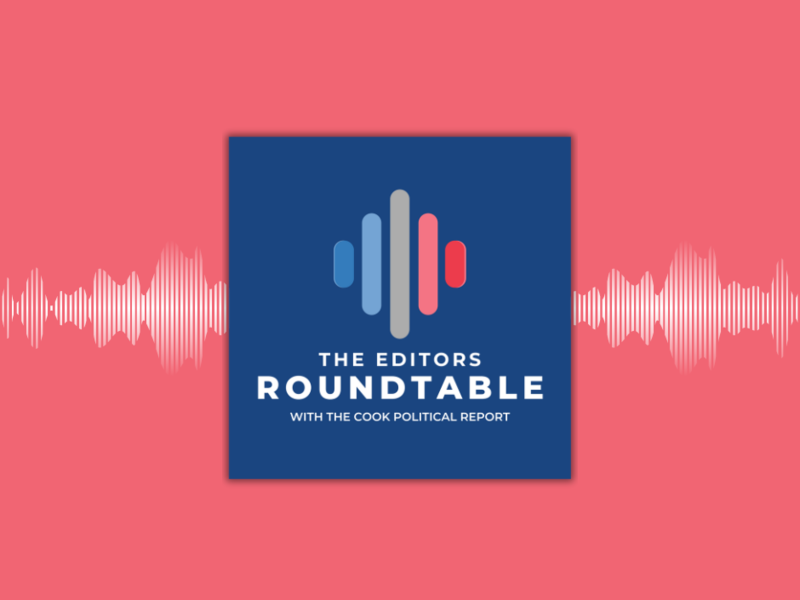
Democrats are happy — and rightly so — to have pulled out a decisive win in the recent California recall. Despite earlier signs of a Democratic enthusiasm gap, Democratic voters turned out in big numbers for this off-year election. Even a dip in President Biden's job approval ratings didn't have any real impact. The "No" on the recall is currently ahead of "Yes" by 28 points, just two points shy of Biden's 2020 30-point blowout.
But, as my colleague Jessica Taylor wrote this week, "in a state as deep blue as California, a big win for Democrats doesn't mean the party's odds are drastically improved ahead of next year's midterm elections."
So, what about some of the other special or off-year elections? Can we mine any of them for clues to 2022?
Unlike 2017, we haven't had a truly competitive House special election this year. All of them have been in districts that are solidly red or blue.
At the state legislative level, there have been dozens of special elections, but just two seats have flipped: Democrats won a formerly GOP state House seat in New Hampshire, while Republicans picked up a state senate seat held by Democrats in suburban Connecticut.
Overall, however, Republicans have been doing slightly better in these races. An analysis this August by CNN's Harry Enten and researcher Ethan Chen found "Republicans are outperforming the 2020 presidential baseline by 3 points."
In 2020, Democrats carried the national House vote by 3.1 points. Given that that margin was barely enough for them to hold onto their majority, another 3 point shift toward Republicans could be politically fatal for the Democratic majority. Even so, it's nowhere near the advantage that Republicans had in 2010. That year they won the House popular vote by almost 7 points and picked up 63 seats.
On its face, Virginia seems like the better bellwether for 2022. As my colleague Charlie Cook points out, the fact that Virginia governors are limited to just one, four-year term, means that every gubernatorial contest is an open seat — a much purer test of partisanship and the mood of the electorate than an election featuring an incumbent. And, unlike California's recent election, Republicans have a stronger, less controversial and better-funded candidate in the Virginia gubernatorial contest.
In recent years, Virginia's gubernatorial elections have been sagacious. Democrat Ralph Northam's big win in 2017 was propelled by the same level of suburban anti-Trump intensity that would sweep Republicans out of their House majority a year later. In 2009, just one year after Barack Obama carried the state by 7-points, Republican Bob McDonnell crushed the Democratic nominee Creigh Deeds by 17 points. This too, proved to be a prescient sign of the drubbing that was to come for Democrats in the 2010 midterms.
For years, the swing between the previous year's presidential results and the gubernatorial results were big. For example, while George H.W. Bush easily carried the state in 1988 by more than 20 points, Democrat Doug Wilder won the governorship in 1989 by less than a point — a 20 point swing. In 2005, Tim Kaine won the gubernatorial election by almost 6 points, a 13-point swing from George W. Bush's 8-point win there in 2004. Since 2013, however, the swings have been more muted. Terry McAuliffe underperformed President Obama's showing in 2012 by just over 1 point, while in 2017, Ralph Northam did only four points better than Hillary Clinton. Over the last ten years Virginia, like the rest of the country, has become more polarized. The red/blue jersey that a voter wears in a presidential election is less likely to be tossed aside even in a more parochial election like governor.
Virginia has also become a bluer state since 2009. Not only have Republicans not won a statewide race since then, no GOP statewide nominee for Governor, Senate or President has won more than 44 percent of the vote since 2014.
With a PVI of D+2, Virginia is bluer than the kinds of states that Democrats need to hold/win the Senate in 2022 like Wisconsin (R+2), Pennsylvania (R+2), New Hampshire (EVEN) or Nevada (EVEN).
So, given Virginia's blue hue, can we still look to it for guidance for what 2022 may hold?
Obviously, a win by Republican Glenn Youngkin would be a big upset. Alarm bells would be ringing in Democratic campaigns all over the country that even a state that Biden carried by 10-points was vulnerable.
But, even if McAuliffe wins (and we currently rate this contest as Lean Democrat), there are still some lessons we can take from this election.
The most important is whether there is a suburban "snap-back" for Republican candidates now that Trump is no longer in office. For the last four years, we've watched as suburban areas, especially in the populous northern part of the state, have shifted their allegiance from red to blue. But, with Republicans offering a more traditional GOP nominee, with a more traditional GOP message (low taxes/tough on crime), will those voters 'go back home' to the GOP? I'll be looking especially in areas that have only recently been trending to Democrats like Chesterfield County outside of Richmond and Stafford County in Northern Virginia.
McAuliffe doesn't need to hit Biden-levels in many of these suburban areas to win this November. But, for many Democrats up in 2022 (or those who want to unseat a GOPer next year), they can't afford any slippage in Biden-level support in these types of suburban areas.
There's no such thing as the perfect 'bellwether' election, one that can give us confidence for how key swing states and districts will perform next year. There are also a million different things that are going to happen between now and next fall that could impact these races; from unexpected retirements to big national and international events. And, of course, candidate quality is critical, especially in Senate contests. But, the most important number to watch is how the off-year results line up with those from 2020. Democrats are defending and fighting for seats that Biden only narrowly won or lost in 2020. The closer Democrats get to 2020 presidential margins in off-years suggests (though doesn't predict) a better outcome for the party in 2022.
Image: AP Photo/Steve Helber









Subscribe Today
Our subscribers have first access to individual race pages for each House, Senate and Governors race, which will include race ratings (each race is rated on a seven-point scale) and a narrative analysis pertaining to that race.